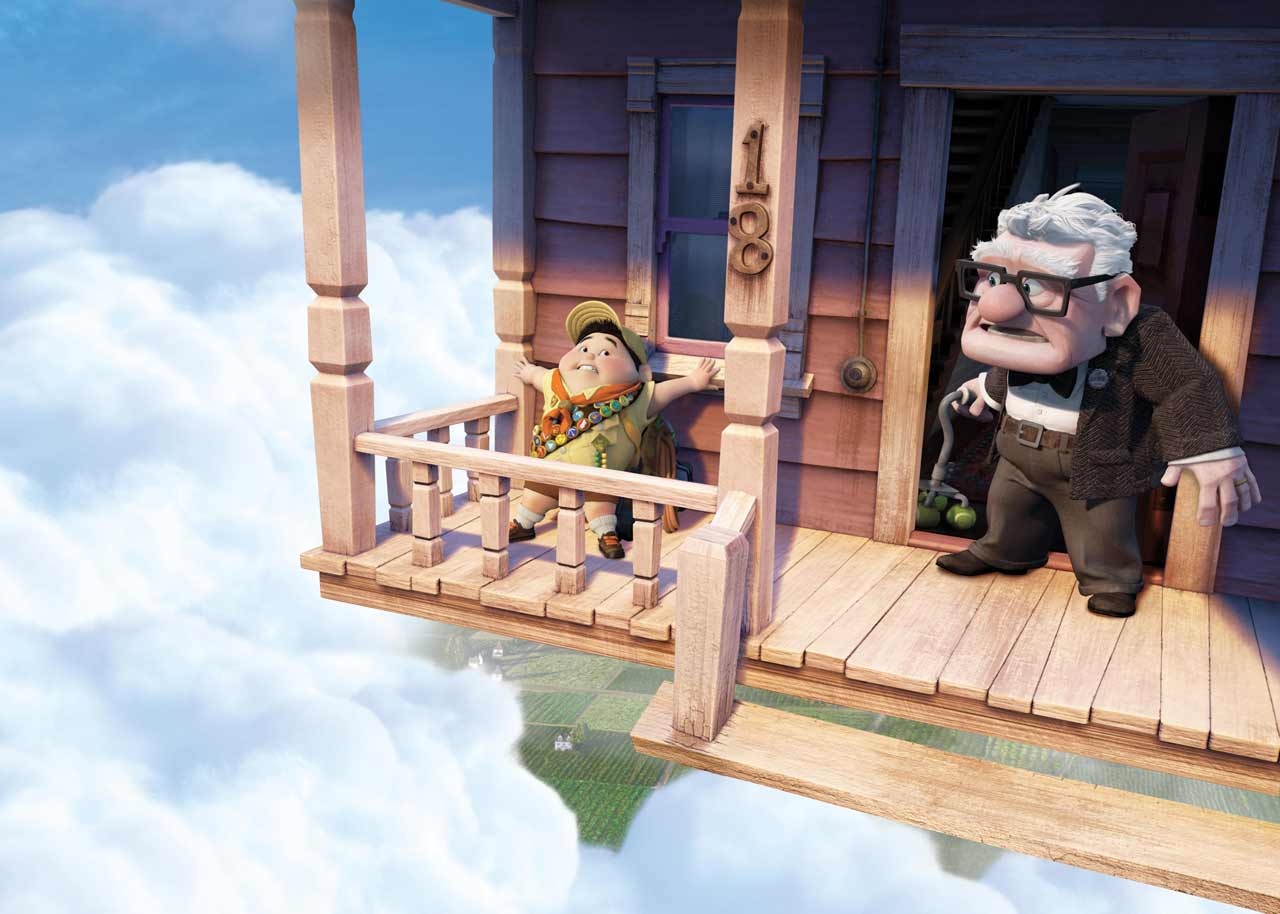WALL•E

Yes, the first half of WALL•E is as good as everyone says it is. It's essentially a silent comedy, built out of scrap metal, consumer cast-offs, and a forbidding end-of-the-world landscape -- New York City as a far-future archeological dig. Our hero is a plucky bucket of bolts who sees through binocular eyes and burbles like R2D2 as he makes orderly piles out of the refuse left by the erstwhile Earthlings who fled their ruined planet hundreds of years before for the machine-assisted comforts of a distant space station. Their absence is what makes WALL•E's Manhattan so charming -- the irony is that these miserable, junk-strewn environs are attractive to the old-school WALL•E, who busies himself by collecting and categorizing -- a Rubik's Cube here, a light bulb there -- the detritus of civilization. It's not until EVE, a sleek, iPod-styled girl robot shows up on the scene that WALL•E becomes aware of his own loneliness.
Once WALL•E leaves Planet Earth, the story really spins into action. EVE is a probe sent back home by humanity to search for signs of life on the desolate planet. When she finds a tiny green thing sprouted in the dirt, she returns to the spaceship Axiom to report back. Turns out there was a centuries-old cover-up related to just how bad Earth's environmental damage was. Axiom's captain tries to set a course for home, and all hell breaks loose when the ship's autopilot stages a 2001-style revolt against its human masters. (Humanity has been drifting in space for so long, with so many computer-controlled conveniences at its collective service, that the human physique has quickly evolved to near-spherical proportions. That means the corpulent masses have to remember how to stand upright in order to reclaim their destinies.)
It's pointed stuff -- a little too pointed. As storytellers, the Pixar wizards have excelled at packing subtext so tightly into the fabric of their narratives that you hardly notice the message-delivery mechanism. (I'm thinking of Ratatouille's ideas about the relationship between art and criticism, or the complex character psychology embedded in Toy Story 2.) WALL•E isn't like that. At one point WALL•E and EVE end up outside the Axiom, dancing together in a scene (ostensibly inspired by WALL•E's fascination with an old VHS tape of Hello, Dolly!, of all things) that feels like an ostentatious riff on Fantasia. Sure, this gang has always been a bunch of show-offs, but I can't remember another Pixar film that so clearly called to the audience, "Look at me -- I'm not just a cartoon! I'm a work of art!"
Even after WALL•E turns clunky, you could hardly describe it as graceless. The beauty of its images is undiminished, the acuity of its animation unrivaled, the warmth underlying it all apparent. The long first section of the film really is a masterpiece, its comic meaning revealed in the images on screen rather than in the details of the overtly cautionary sci-fi yarn that takes over. And there's magic in the character design, the camerawork (assisted by visual consultant Roger Deakins), and the madcap action on board the Axiom. At the same time, I don't remember another Pixar film that could remotely be described as preachy. By the time it's over, WALL•E himself has been sacrificed and reborn -- I'm not sure if that's meant as a Christ parable or just an homage to E.T., but it still feels distinctly second-hand. B+ Posted by on June 30, 2024 7:06 PM


